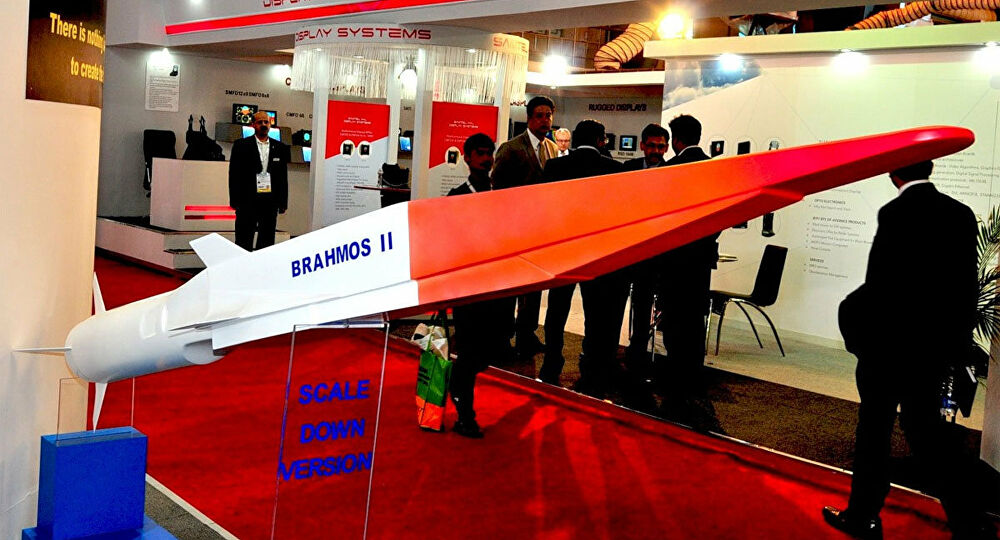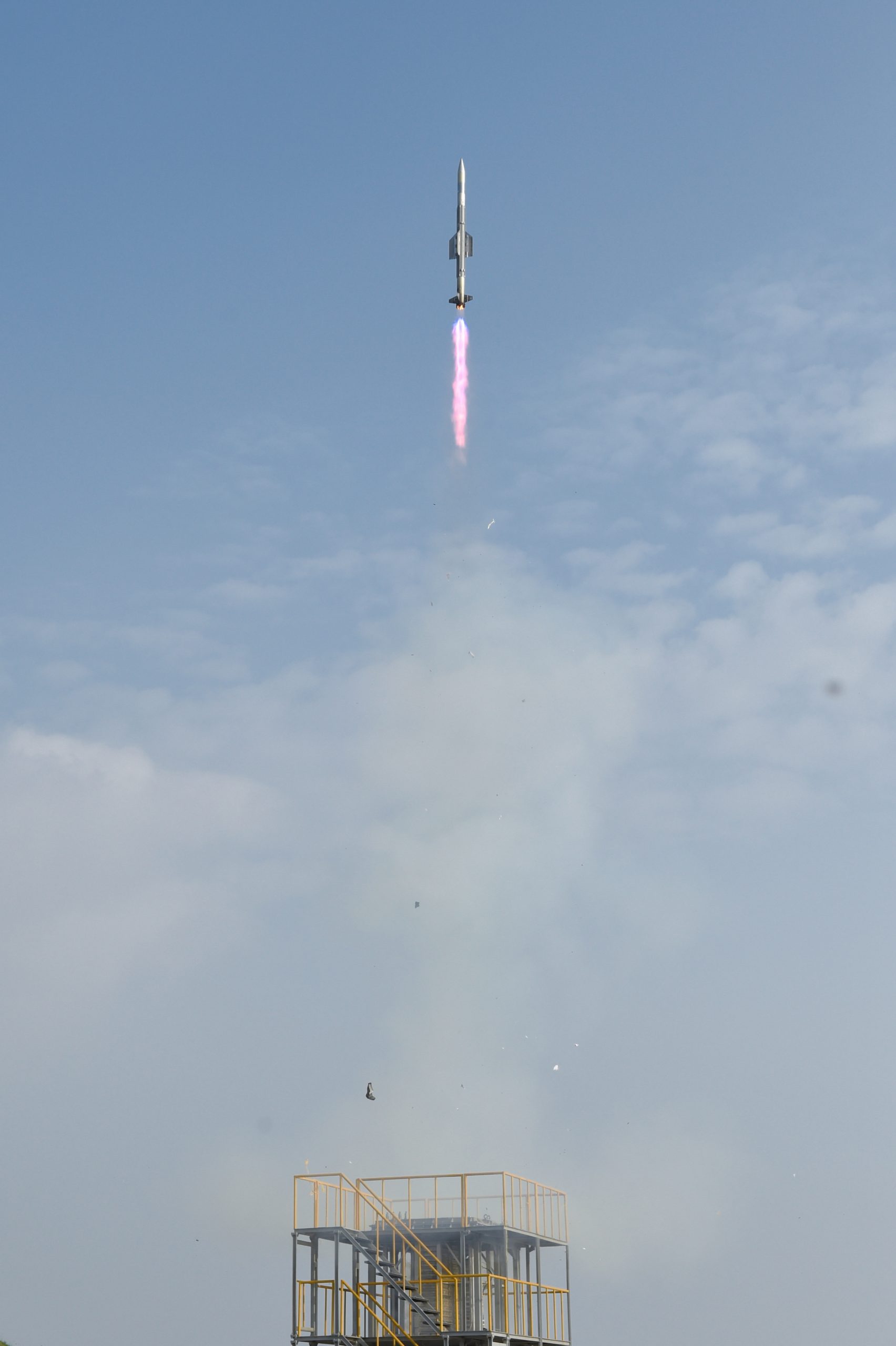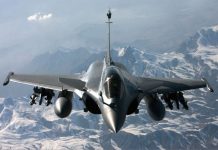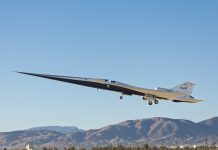As China has been rapidly expanding its hypersonic missile capability that has even flustered the US, the Indian Defence Minister said that New Delhi must work towards developing hypersonic missiles to maintain credible deterrence.
Speaking at a DRDO event on Tuesday, Rajnath Singh said ballistic missile defense systems are getting more and more robust with the passage of time. “In order to maintain a minimum credible deterrence, we have to immediately think about hypersonic cruise missile development. It will be a revolutionary step in our defense sector and we all have to put our efforts into it.”
India’s Hypersonic Ambitions
Earlier, India joined select nations by successfully conducting the maiden test of the High-Speed Technology Demonstrator Vehicle (HSTDV) using an indigenously developed propulsion system.
Singh had then tweeted: The DRDO has today successfully flight tested the Hypersonic Technology Demonstrator Vehicle using the indigenously developed scramjet propulsion system. With this success, all critical technologies are now established to progress to the next phase.
The successful test was a significant achievement in developing hypersonic delivery platforms including development as a carrier vehicle for cruise missiles and for the launching of satellites at an economical cost.
DRDO is also believed to be working on BrahMos-II hypersonic anti-ship missile. According to reports, it is expected to obtain over six times the speed of sound on hypersonic scramjet technology.
The BrahMos-2 is twice as fast as BrahMos-1 and can reach a speed of over Mach 6. Even though the missile is expected to have a range of 600 km, experts claim that the BrahMos II, which could be akin to Russia’s Zircon hypersonic missile, can exceed its range of 1000 km and can glide at a speed as high as Mach 8.

According to a recent report by the Congressional Research Service (CRS), a US Congress think tank, India is amongst the very few nations that is developing hypersonic weapons.
The report stated that the US, Russia, and China have one of the most advanced hypersonic programs in the world, however, various other nations like India, Australia, France, Germany, and Japan are also developing the technology.
The BrahMos II was originally planned to be deployed by 2017. However, it faced substantial delays and is now anticipated to achieve initial operational capability between 2025 and 2028.
DRDO Tests Vertical Missile
India’s DRDO successfully recently tested the Vertical Launch Short Range Surface to Air Missile (VL-SRSAM) from the Integrated Test Range in Chandipur, off the coast of Odisha.
The testing of the missile, which was fired from a vertical launcher and aimed at an electronic target at a very low altitude, was conducted to validate the integrated operation of all the components of the weapon system. These include the vertical launcher unit with a canisterized flight vehicle, controller, and weapon control system, etc.
These components will be crucial for future launches of the missile from Indian Navy ships. Both the missile and the Vertical Launch System (VLS) make a deadly combo.
The VL-SRSAM has been designed and developed jointly by three facilities of the DRDO (Defence Research and Development Organisation). The missile has the capability of neutralizing various aerial threats at close ranges.

Sea-skimming objects are also under the scope of targets that the missile can neutralize. The armament has been specially designed to strike at high-speed airborne targets at the range of 40 to 50 km. The range extends to an altitude of around 15 km. DRDO officials have said its design is based on the Astra Beyond Visual Range (BVR) air-to-air missile.
Two main features of the missile are its cruciform wings and its thrust vectoring capability. It has four small wings arranged like a cross on four sides. They provide the missile with a much-needed stable aerodynamic posture. Regarding the thrust vectoring ability, an official told The Indian Express that it refers to the capacity to change the direction of the thrust from its engine and to control the angular velocity and the attitude of the missile.
The launch of the missile depends on a hot launch type VLS. The system itself has 8 cell modules fitted in 2 rows of 4.
The Vertical Launch System
During the era of the Cold War, missile launches were dependent on rotating-arm launchers that fired one or two projectiles at a time. In contrast to this, the more modern VLS technology consists of dozens of launch tubes that are called “cells”.
These cells serve the purpose of holding as well as firing missiles from a moving naval platform such as a warship or a submarine. Perhaps the most popular VLS system is the US Navy’s Mark 41, which is currently used by close to 20 nations.
Most VLS employs two different methods of firing: the hot launch or the cold launch. Besides this, there is also the concentric canister launch. In the hot launch system, the missile ignites in the launch tube while in the latter, it gets ignited after being expelled by gas produced by a gas generator which is separate from the missile itself. The concentric canister launch mechanism can use both hot and cold methods.
Vertical Launch Short Range Surface to Air Missile for @IndianNavy was flight tested from ITR Chandipur. The missile was tested against an electronic target at a low altitude. The weapon is planned for integration onboard naval ships. pic.twitter.com/vYGTMjXQNw
— DRDO (@DRDO_India) December 7, 2021
India used the hot launch method to flight test the VL-SRSAM. While this method does not need an ejection mechanism, it still demands some way to get rid of the missile’s exhaust and heat when it leaves the cell.
If the missile ignites in a cell that does not possess an ejection mechanism, the cell must bear the huge amount of heat that gets generated without igniting the missiles in the adjoining cells. This method is advantageous as it eliminates the need for a separate system for the ejection of the missile from the launching tube.
It is built such that the missile is to propel itself out of the launching cell using its own engine. As a result, the hot launch vertical launch system itself is comparatively lighter, smaller, and cost-effective. In addition, these systems have a much faster engagement time owing to the fact that the missile is released from the ship as soon as the motor is ignited.

However, the system has one very potent risk: in case of a missile malfunctioning, the launch tube or the cell could be completely ruined. This risk isn’t present in the cold launch method as that system can eject the missile if its engine fails during launch.
Overall, the fixed, multi-missile VLS still poses a big threat to enemy platforms as it allows naval vessels to increase their rate of fire manifold. It also saves the time that earlier rail launchers used to take up to get “re-loaded” after a launch.
As most hot launch VLSs (especially the Mark 41) follow a method wherein the missile launches vertically upwards first and then turns toward its target, there is no requirement for the launcher to be aimed at the target, or for the ship to maneuver before the launch to let the missile reach its aim.
- Co-Authored by Shreya Mundhra
- Contact the author (s) at: etdesk@eurasiantimes.com
- Follow EurAsian Times on Google News




